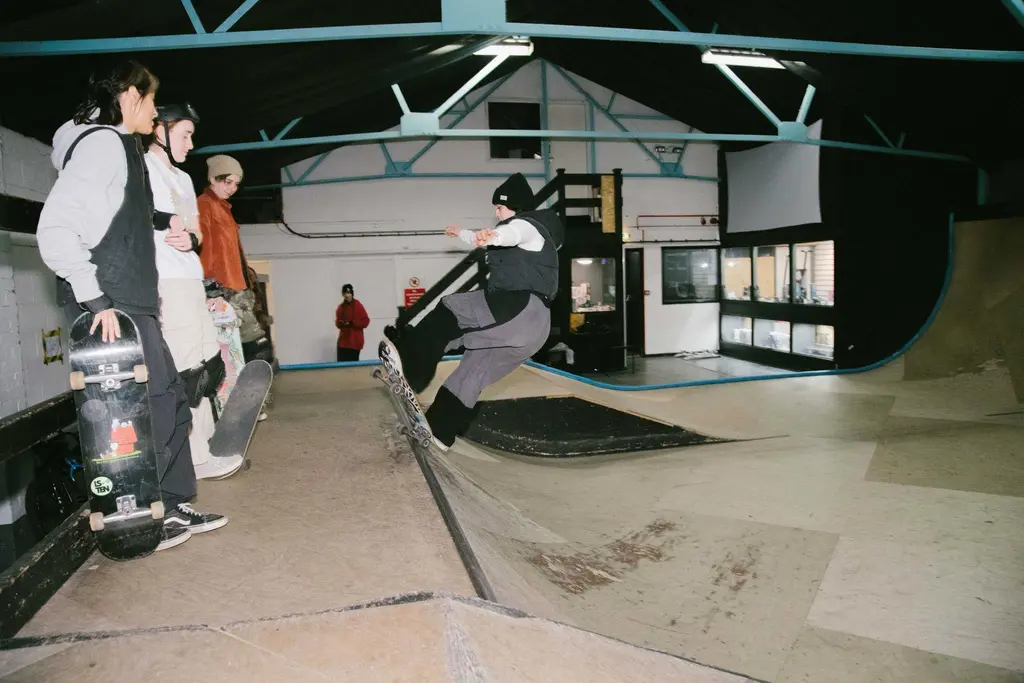An unconventional portrait of queer motherhood
- Text by Miss Rosen
- Photography by Justine Kurland

During the late 1990s, American photographer Justine Kurland hit the road in a camper van and set forth on a journey to create the groundbreaking series, Girl Pictures. Deftly subverting hypermasculine tropes of the rugged individualist forging a new world in the wild frontier, she staged luminous scenes of teen girls embracing collectivism to live together in harmony with nature.
“I have always been drawn to the way photography lies and tells the truth,” Kurland says. “It can never really be a metaphor or a symbol because it is always the fact of what is front of the camera. So every staged picture is only ever the yearning for and the imagining of alternative modes of being. In this way its an important political tool because nothing can change if we can’t visualise what that looks like.”
When she became a mother, Kurland continued along her path, enveloping her son Casper in the fluid intimacy of her migratory life. Between 2005 and 2010, they traveled the country, following the seasons in order to bask in the sun’s succulent rays for as long as possible.

For Kurland, life on the road was a family affair, with its roots embedded in her own childhood. “My mother made hand crafted clothing and sold them at Renaissance Fairs up and down the east coast to support us,” she says. “My siblings and I traveled with her, camping on site, and later worked for her. I inherited certain types of knowledge from her: how to get by in a nomadic mode, how to build out a liveable van and how to raise children as an extension of a family business.”
With the new book, This Train (MACK), Kurland deftly weaves together large format photographs of mother and child with sweeping vistas of roads, infrastructure, and trains violently carved out in the majestic landscape, exploding the heroic mythos shrouding the brutal histories inscribed in the earth.


“Every ideal has a shadow side. I photographed the trains because my son loved them and I wanted to be in sync with his enthusiasms,” Kurland says. “But in photographing the trains I also photographed violent histories embedded in their right of way: the genocide of indigenous people as early migrants pushed violently westward, the carbon emissions from the first steam engines that mark the on set of the Anthropocene, and the ghosts of the thousands of Asian-American labourers that laid the tract and died because of unsafe working conditions, disease or suicide at the same time their rights to citizenship was barred by US law in the first race based anti-immigration policies.”
As with Girl Pictures, Kurland’s fabricated tableaux create a counter-narrative brimming with possibilities untold. “I wouldn’t call me pictures utopic because they are possible,” she says.
“I use photography to imagine other possibilities that counter the harmful effects of patriarchy, capitalism, and imperial modes of domination,” Kurland continues. “The photographs in This Train are dear to me not simply because it’s me and my son, but because it asserts the legitimacy of non-normative of family life and the possibility of shifting modes of value and meaning.”
Latest on Huck

Clubbing is good for your health, according to neuroscientists
We Become One — A new documentary explores the positive effects that dance music and shared musical experiences can have on the human brain.
Written by: Zahra Onsori

In England’s rural north, skateboarding is femme
Zine scene — A new project from visual artist Juliet Klottrup, ‘Skate Like a Lass’, spotlights the FLINTA+ collectives who are redefining what it means to be a skater.
Written by: Zahra Onsori

Donald Trump says that “everything is computer” – does he have a point?
Huck’s March dispatch — As AI creeps increasingly into our daily lives and our attention spans are lost to social media content, newsletter columnist Emma Garland unpicks the US President’s eyebrow-raising turn of phrase at a White House car show.
Written by: Emma Garland

How the ’70s radicalised the landscape of photography
The ’70s Lens — Half a century ago, visionary photographers including Nan Goldin, Joel Meyerowitz and Larry Sultan pushed the envelope of what was possible in image-making, blurring the boundaries between high and low art. A new exhibition revisits the era.
Written by: Miss Rosen

The inner-city riding club serving Newcastle’s youth
Stepney Western — Harry Lawson’s new experimental documentary sets up a Western film in the English North East, by focusing on a stables that also functions as a charity for disadvantaged young people.
Written by: Isaac Muk

The British intimacy of ‘the afters’
Not Going Home — In 1998, photographer Mischa Haller travelled to nightclubs just as their doors were shutting and dancers streamed out onto the streets, capturing the country’s partying youth in the early morning haze.
Written by: Ella Glossop


